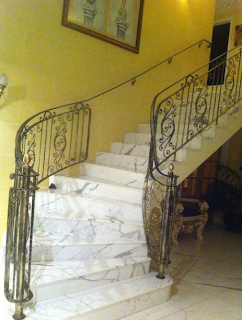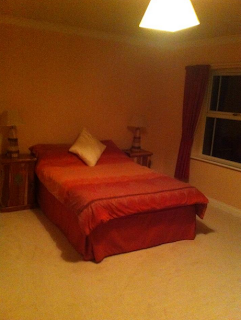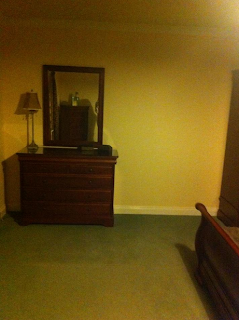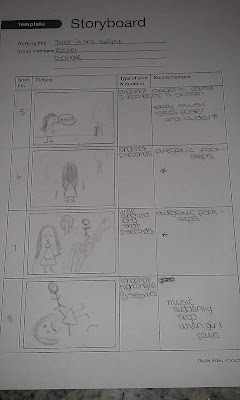On Monday's lesson we discussed how sound helped represent sexuality in a clip. Here are some notes from my lesson about sound as well as some of my own background research.
Direct Sound - Live sound. This may have a sense of freshness and spontaneity, but may not be acoustically ideal.
Studio Sound - Sound recorded in the studio to improve the sound quality, eliminating unwanted background noise (ambient sound). This can then be mixed with direct sound.
Selective sound - Removing some sounds and keeping others to make significant sounds for dramatic effect. For example, selective sound (and amplification) may make us aware of a watch or a bomb ticking.
Sound perspective/aural perspective - The impression of distance in sound, usually created through the use of selective sound. Even in live television a microphone is deliberately positioned, just as the camera is, and therefore may privilege certain individuals.
Sound bridge - Running sound (narration, dialogue or music) from one shot across a cut to another shot to make the action seem uninterrupted.
Dubbed dialogue - Recording the voice-track in the studio after filming, so the actors can match their words to the on-screen lip movements.
Wildtrack (asynchronous sound) - Sound which is evidently recorded separately from the visuals it is shown with. For example, a studio voice-over added to a visual sequence later.
Parallel (synchronous) sound - Sound 'caused' by some event on screen, which matches the action.
Commentary/voice-over narration - Commentary spoken off-screen over the shots shown to the audience. The voice-over can be used to:
1. Introduce particular parts of a programme,
2. Add extra information not evident from the picture,
3. For the audience to interpret the images from a particular point of view,
4. Link parts of a sequence or programme together.
Sound effects (SFX) - Any sound from any source other than synchronised dialogue, narration or music. Dubbed-in sound effects can add to the illusion of reality. A stage- set door may be used to add the sound of a heavy door slamming or creaking.
Music - Helps to establish a sense of the pace of the scene and the rhythm of music usually dictates the rhythm of the cuts. As well as setting the mood and atmosphere of a scene. Background music is not normally intended to be noticeable, for example, conventionally, background music accelerates for a chase sequence. Through repetition it can also link shots, scenes and sequences.
Silence - The juxtaposition of an image and silence can frustrate expectations, provoke odd, self-conscious responses, intensify our attention, make us apprehensive, or make us feel dissociated from reality
Evaluation
From this I have learnt how sound is used when producing a piece of media text which is very useful because I will need to understand all these techniques in case we decide to use them when producing and editing our coursework. In addition, I have also learnt how these techniques link to a piece of media text so I can understand how they are used to create different meanings and represent what a character may be feeling.







































